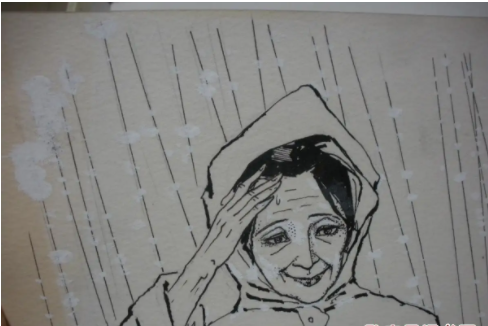本文是一篇英语毕业论文,本文研究了女主人公焦虑的表现形式、成因及缓解途径。首先,本文分析了她焦虑的表现形式。送奶工不断的无形骚扰和谣言激发了女主人公的焦虑。女主人公未能在意识层面处理焦虑,导致了神经质。神经质焦虑抑制了她的创造性活动,阻碍了她的意识,导致一系列症状和神经质行为。由于神经性焦虑而瘫痪,她无法开展建设性活动来应对焦虑造成的情况,并找出真正的威胁。女主人公焦虑的表现揭示了焦虑是如何麻痹她的心理和损害她的身体健康的。
Chapter One The Manifestations of Middle Sister’s Anxiety in Milkman
1.1 Progression of Middle Sister’s Anxiety
On the ground that May classifies anxiety as normal and neurotic ones, this part will demonstrate how the heroine’s anxiety emerges and turns into a neurotic one. In Milkman, the main storyline centralizes in her retrospective narrative of Milkman’s harassment. This harassment dramatically influences her psychological state. When Milkman appears in the heroine’s life, she begins a progression of anxiety that she cannot constructively treat, leading to her neurotic anxiety.
“Anxiety is the reaction when a person faces some kind of destruction of his existence or that which he identifies with it” (May, 1977: 343). Milkman’s appearance is an essential occasion that activates the narrator’s anxiety. His first appearance from nowhere startles her when she is reading while walking. Milkman casually speaks out the male names of her family and offers her a lift unaccepted by “middle sister”. Then he disappears of a sudden. His behaviors confuse “middle sister”. After the first encounter with Milkman, her “first brother-in-law” fabricates the rumor that “middle sister” is the mistress of Milkman. Milkman, who appears from nowhere and will disappear in a sudden, again presents while “middle sister” is running. It is in the second encounter that she knows Milkman’s intention. “I knew by this second meeting that the milkman was attracted to me” (Burns, 2018: 6).
1.2 Middle Sister’s Psychosomatic Symptoms
As May has stated that symptoms follow neurotic anxiety, anxiety symptoms are developed in accord with the heroine’s progressive emergence of anxiety. This part will illuminate her psychosomatic symptoms. Her anxiety symptoms appear in Milkman’s second encounter with her in the run session. The initial symptom of her anxiety state is her notice of the state force’s click for the first time. Such click is a usual practice that happened before Milkman’s appearance, but she forgets due to her “memory lapses” (Burns, 2018: 43). She is in fear of her being photographed by the state for her association with Milkman. As Milkman is assumed as a member of “renouncers-of-the-state”, the narrator’s association with him is dangerous for her survival.
Followed by Milkman’s second appearance, the narrator changes her daily routine.
The morning after that run session, and earlier than usual, and without telling myself why, I walked out of my way to the other side of the district to catch a different bus into town. Also I got that same bus home. For the first time ever I did not do my reading-while-walking. I did not do my walking. Again I did not tell myself why. Another thing was I missed my next run session (11).

Chapter Two The Causes of Middle Sister’s Anxiety in Milkman
2.1 Historical Cause: The Sectarian Conflicts
Anxiety is conditioned through historical dimensions. Of great significance is to analyze the historical cause of the female protagonist’s anxiety. Although Burns removes the accepted terminology of The Troubles in Milkman, several occasions intimate that background of this novel sets in the 1970s. For example, “the Nineteen -Seventies” (60), and “the political problems of eleven years were going on” (58). Concerning the historical aspect, it is essential to illustrate the origin of The Troubles.
When Ireland established its independent country in 1921, the six north-eastern counties of Ireland made up the new state, remaining a part of Great Britain. Northern Ireland is composed of two-thirds Protestants and one-third Catholics. The unionists, consisting of the Protestants, hope to keep a close link with the British government. While the nationalists, mainly the Catholics, “considered themselves trapped in this new state, denied their Irish identity, cut off from their co-religionists in the Free State and politically powerless” (McKittrick & McVea, 2002: 5). Northern Ireland’s first minister Sir James Craig replaced the voting system (known as proportional representation) with the first-past-the-post system. This management led to Northern Ireland running “on the basis of Protestant majority rule for the following half-century, actively discriminated against Catholics in the allocation of jobs and housing, over political rights and in other areas” (McKittrick & McVea, 2002: 5). As the discrimination against Catholics increases intensely, nationalists argue for more participation in the state in the 1960s. “The origin of the present conflict lies in the mass protests of the civil rights movement in the 1960s against the systematic exclusion of Catholics within Northern Ireland from political and economic power” (Sales, 2002: 2).
2.2 Social Causes: Totalitarianism and Patriarchy
May defines that anxiety creates when one’s existence is threatened. “Anxiety is the subjective state of the individual’s becoming aware that his existence can become destroyed, that he can lose himself and his world, that he can become ‘nothing’” (May, 1994: 109).
In Milkman, two social causes threaten the heroine’s existence. The first is the totalitarianism in her community. Anna Burns accounts Milkman as “any sort of totalitarian society existing in similarly oppressive conditions” (Burns, 2018, interviewed by Allardice). In this novel, the protagonist “middle sister” evaluates her district as an “intricately coiled, overly secretive, hyper-gossipy, puritanical yet indecent, totalitarian district” (Burns, 2018: 172). In their district, everything bears the political standpoint.
“As regard this psycho-political atmosphere, with its rules of allegiance, of tribal identification, of what was allowed and not allowed”, all things in their life such as their names, eating, studying are distinguished from “the country over the water” (24). The narrator’s community performs as a Panopticon (Morales-Ladrón, 2019). In this “enclosed, segmented space”, community members’ “slightest movements are supervised and recorded” (Foucault, 1979: 197). Applying this “Panopticon” mechanism, “a real subjection is born mechanically from a fictitious relation” (Foucault, 1979: 202). The community members conform to their ruling without the renouncers’ force to restrain them. They are turning into docile bodies.

Chapter Three The Alleviating Ways of Middle Sister’s Anxiety in Milkman ..... 32
3.1 Resolution of Inner Conflicts ...................... 32
3.2 Application of Writing to Develop Selfhood ............................. 36
Conclusion ........................ 40
Chapter Three The Alleviating Ways of Middle Sister’s Anxiety in Milkman
3.1 Resolution of Inner Conflicts
As the narrator’s anxiety develops into a neurotic level, coping with the inner conflicts in neurotic anxiety is crucial for alleviating anxiety. In Milkman, the heroine’s neurotic anxiety is relieved when she resolves her inner conflicts. The inner conflicts are the contradiction between her self-autonomy and the adherence to the collective mindset. The narrator eventually submits to the representative of “armed patriarchy”–Milkman. She is forced to adhere to the collective mindset to seek survival.
In addition to the coercion of the community and Milkman, her submission is attributed to the other two elements. Before she submits to Milkman, she has tried to protect herself from the community’s invasion and the “wrong spouse” marriage. However, her self-defenses fail. Firstly, her defense against the community’s invasion fails. She has applied a verbal mechanism against the community’s member’s questions. The community members believe that she is the mistress of Milkman. They confound the absolute truth with the rumors. When the rumors are accepted by the members as the truth, it has damaged her relationship with “maybe-boyfriend”. What’s more, her neurotic verbal behavior “I don’t know” results in her losing reason rather than protecting herself.
Secondly, her mechanism against the “wrong spouse” marriage fails. Before she steps into Milkman’s car, she has found that her “maybe-boyfriend” is injured in a fight. At the same time, she realizes that the “maybe-relationship” she is keeping with “maybe-boyfriend” is broken. Maintaining a “maybe-relationship” is one way she can escape the “wrong spouse” marriage in their community. “The shared reluctance to put their “maybe” relationship on solid footing is a symptom of the unrelenting volatility of the times” (Feather, 2019). Members of the narrator’s district chose to marry someone they had not fallen in love with to seek survival. Attempting to resolve this marriage anxiety, “middle sister” keeps her “maybe-relationship” with “maybe-boyfriend”. However, she is the “wrong spouse” of “maybe-boyfriend”, whose real lover is “chef”, a male. Her self-defense against “wrong spouse” marriage fails, similar to her defense against the community members’ rumor invasion.
Conclusion
Anna Burns expresses her thought-provoking insight towards power, violence, individual survival, and the psychological effects reflected in a political turmoil society. Her own experience in Belfast provides her with diverse perspectives to delineate a society with the background of the Northern Ireland conflict. This Man Booker Prize awarded book Milkman offers opportunities for the reader to study how a girl in a totalitarian society with strict sectarian rules reacts to the conflicts to seek survival.
This thesis studies manifestations, causes and alleviating ways of the heroine’s anxiety. Firstly, this thesis analyzes the manifestations of her anxiety. Milkman’s constant invisible harassment and the rumors activate the heroine’s anxiety. The heroine fails to deal with the anxiety at the conscious level, leading to a neurotic one. Neurotic anxiety represses her creative activities and blocks her awareness, resulting in a series of symptoms and neurotic behaviors. Paralyzed by neurotic anxiety, she cannot conduct constructive activities to cope with the anxiety-creating situations and figure out the real threat. The manifestations of the heroine’s anxiety reveal how anxiety paralyzes her psychology and damages her physical health.
reference(omitted)
